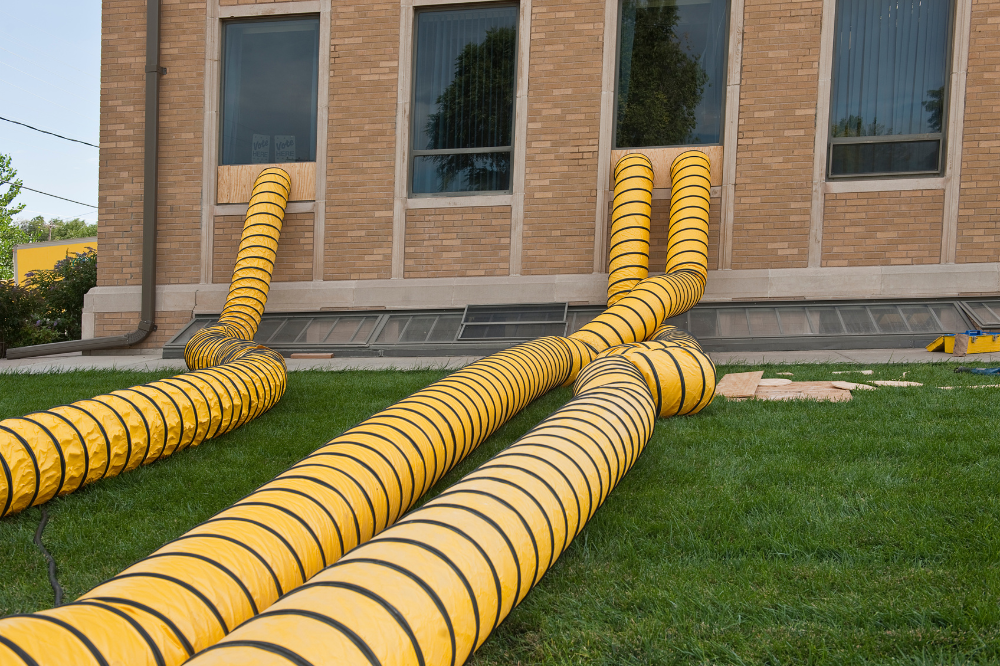Water damage can be devastating to your home, but did you know there’s a science behind the restoration process? Understanding the principles at work during water damage restoration can help you appreciate the steps professionals take to bring your home back to its original state. In this guide, we’ll explore the science behind water damage restoration and discuss the critical aspects that make the process effective.
The Science Behind Water Damage Restoration
This guide explains the following:
- Psychrometry: The Science of Drying
- Extraction Techniques and Equipment
- Dehumidification and Air Movement
- Antimicrobial Treatments
- Moisture Monitoring and Documentation
Here’s a closer look at each.
Psychrometry: The Science of Drying
Psychrometry is the study of air and moisture, which plays a crucial role in the water damage restoration process. By understanding the relationship between air temperature, humidity, and moisture content, professionals can create the optimal conditions for drying your home. This knowledge allows them to manipulate temperature and humidity levels to speed up evaporation, ensuring a faster and more efficient drying process.
Related: What to expect during the water damage restoration process
Extraction Techniques and Equipment
Effective water extraction is critical in minimizing the damage caused by water intrusion. Professionals use a combination of advanced extraction equipment and techniques, such as truck-mounted extractors and submersible pumps, to remove standing water quickly. These methods are more efficient than traditional approaches, reducing the amount of time your home is exposed to water and the potential for further damage.
Related: What to expect during the fire damage restoration process
Dehumidification and Air Movement
Dehumidification and air movement are essential components of the water damage restoration process. Dehumidifiers remove moisture from the air, while air movers help circulate the air, promoting faster drying. Professionals use these tools in tandem to create an environment that encourages evaporation and discourages mold growth. Properly controlling humidity and air circulation is vital in preventing secondary damage to your home.
Related: Understanding different types of water damage
Antimicrobial Treatments
Applying antimicrobial treatments is an important step in the water damage restoration process. These treatments help prevent the growth of mold, bacteria, and other microorganisms that can develop in the aftermath of water intrusion. By using antimicrobial agents, professionals can help safeguard your home against health hazards and ensure a clean, safe environment for you and your family.
Moisture Monitoring and Documentation
Throughout the water damage restoration process, professionals closely monitor and document moisture levels in your home. Using specialized equipment, such as moisture meters and infrared cameras, they can detect hidden pockets of moisture and track the drying progress. This thorough approach ensures that your home is completely dry and minimizes the risk of future problems related to lingering moisture.
Related: Protecting your home from water and fire damage with regular maintenance
By understanding the science behind water damage restoration, you can appreciate the techniques and tools professionals use to bring your home back to its original state. From psychrometry to moisture monitoring, every step of the process is grounded in scientific principles that ensure an effective and efficient restoration. When faced with water damage, trust the professionals who understand the science behind restoring your home.
Do You Need a Disaster Remediation Expert in Washtenaw County or Jackson County?
If your home has already been damaged, we can help. Check out our services and call 734-352-9183 for your free disaster remediation quote today. We offer:
- Water damage restoration
- Mold removal and remediation
- Fire and smoke restoration
- Sewer cleanup and disinfecting
- Reconstruction
- Wind and storm damage repair









